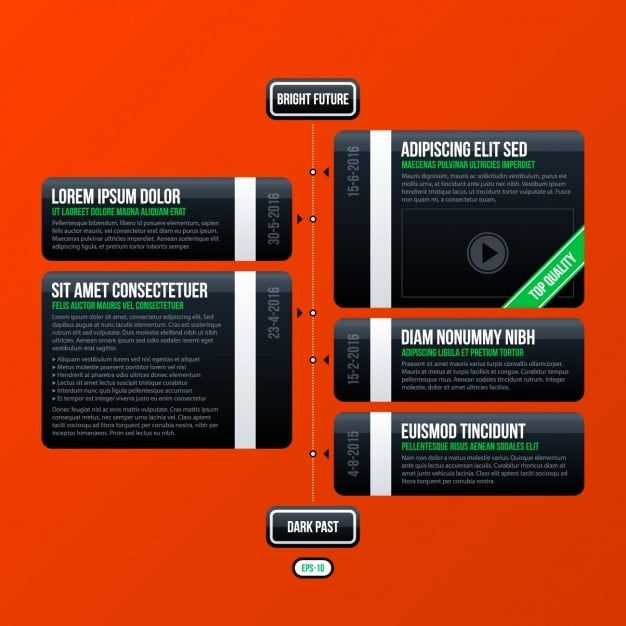Maximize Value: A Guide to Streaming Service Bundling Strategies

Streaming service bundling strategies offer a way to combine multiple streaming services into a single subscription, providing maximum value and entertainment options for consumers.
In today’s digital age, entertainment is often delivered through streaming services. Streaming service bundling strategies have emerged as a popular way to access a variety of content while potentially saving money.
Understanding Streaming Service Bundling
Streaming service bundling refers to the practice of combining multiple streaming services into a single subscription package. This strategy can provide consumers with a more comprehensive entertainment experience while often being more cost-effective than subscribing to each service individually.
Bundling strategies have evolved as the streaming market has become more crowded. Initially, individual services like Netflix and Hulu dominated the landscape. Now, with the rise of Disney+, HBO Max, Paramount+, and others, consumers face a fragmented market. Bundling helps simplify this landscape.

The Evolution of Bundling
The concept of bundling is not new. Cable companies have long offered bundled packages of TV channels, internet, and phone services. Streaming services are now adopting a similar approach to attract and retain customers.
- Early Bundling Attempts: Initial attempts at bundling streaming services were often limited to partnerships between specific providers.
- Rise of Mega-Bundles: As the market matured, larger bundles that included a wider range of services became more common.
- Consumer Demand for Value: The increasing number of streaming options has driven consumers to seek out bundles that offer the best value for their money.
Ultimately, understanding the evolution of bundling helps consumers make informed decisions about their streaming subscriptions, ensuring they get the most entertainment for their budget.
Benefits of Bundling Streaming Services
There are several key advantages to choosing bundled streaming services. These benefits range from cost savings to enhanced convenience, making bundling an attractive option for many consumers.
Bundling isn’t just about consolidating subscriptions; it’s about maximizing the entertainment value and streamlining the user experience. By subscribing to a bundled package, consumers can unlock a more diverse library of content at a reduced price compared to individual subscriptions.
Cost Savings
One of the primary benefits of bundling is the potential for significant cost savings. When services are combined, providers often offer a discounted rate compared to subscribing to each service separately.
For instance, a bundle that includes Disney+, Hulu, and ESPN+ may cost less than subscribing to each of these services individually. This can result in substantial savings over time, especially for households that subscribe to multiple streaming platforms. The price savings can be a significant factor in consumers’ decisions to opt for bundled services.

Convenience and Simplicity
Bundling also offers the advantage of convenience. Instead of managing multiple subscriptions and billing cycles, consumers can handle everything through a single account.
- Single Bill: Bundling simplifies the billing process, reducing the hassle of tracking multiple payments.
- Unified Interface: Some bundles provide a unified interface, making it easier to discover and access content from different services.
- Less Management: Consumers spend less time managing their subscriptions, freeing them up to enjoy their favorite shows and movies.
The convenience and simplicity of bundled streaming services can significantly enhance the overall user experience, making it easier for consumers to access the entertainment they love.
Types of Streaming Service Bundles
Streaming service bundles come in various forms, each designed to cater to different needs and preferences. Understanding the different types of bundles available can help consumers choose the option that best suits their viewing habits.
From telecom giants to media conglomerates, there’s a bundling strategy tailored for almost every consumer. By exploring the different options, consumers can make an informed decision about which bundle offers the best balance of content, price, and convenience.
Telecom Bundles
Telecom companies often offer streaming service bundles as part of their internet or mobile plans. These bundles can provide significant value for customers who already use the company’s services.
For example, T-Mobile offers subscriptions to Netflix and Apple TV+ as part of its Magenta and Magenta MAX plans. Similarly, Verizon may offer discounts on Disney+ or Hulu to its Fios internet customers. These telecom bundles can be an attractive option for consumers looking to consolidate their bills and save money.
Media Conglomerate Bundles
Media conglomerates like Disney and Paramount offer bundles that combine their various streaming services. These bundles typically include a mix of entertainment, sports, and news content.
- Disney Bundle: Includes Disney+, Hulu, and ESPN+, offering a wide range of family-friendly content, sports coverage, and general entertainment.
- Paramount+ and Showtime Bundle: Combines Paramount+’s extensive library with Showtime’s premium content, providing a diverse selection of movies, TV shows, and live sports.
- Warner Bros. Discovery (HBO Max and Discovery+): Combines HBO Max and Discovery+, offering Movies, TV shows, news and reality TV content.
Media conglomerate bundles are a popular choice for consumers who enjoy content from multiple services within the same company.
Factors to Consider When Choosing a Bundle
Selecting the right streaming service bundle requires careful consideration of various factors. Consumers should evaluate their viewing habits, budget, and content preferences to make an informed decision.
Bundling is not a one-size-fits-all solution. It is essential to assess your entertainment needs and align them with the offerings of different bundles to maximize value and ensure a satisfying streaming experience.
Content Preferences
The most important factor to consider is the content offered in the bundle. Consumers should ensure that the bundle includes services that align with their viewing preferences.
For example, if you are a sports fan, a bundle that includes ESPN+ or another sports-focused service would be a good choice. If you prefer family-friendly content, the Disney Bundle may be more suitable. It is essential to review the content libraries of each service in the bundle to ensure they meet your entertainment needs.
Budget
While bundling can save money, it is important to consider your overall budget. Evaluate the cost of the bundle and compare it to the price of subscribing to individual services.
Also, consider whether you will actually use all the services included in the bundle. Sometimes, subscribing to a smaller number of individual services may be more cost-effective if you only watch a limited amount of content. A careful budget analysis can help you determine the most economical option.
Future Trends in Streaming Service Bundling
The streaming landscape is constantly evolving, and bundling strategies are likely to adapt to meet changing consumer demands. Several future trends are expected to shape the way streaming services are bundled.
Innovation continues to drive the streaming market. From customizable bundles to the integration of new technologies, the future of streaming service bundling promises even greater value and convenience for consumers.
Customizable Bundles
One potential trend is the rise of customizable bundles, allowing consumers to choose the specific services they want to include in their package. This would provide greater flexibility and personalization.
Instead of being limited to pre-set bundles, consumers could select from a range of services and create a package that perfectly matches their viewing preferences. This level of customization could attract more consumers who are hesitant to commit to larger, less tailored bundles. By offering customizable options, providers can cater to a wider range of consumer needs.
Integration with Smart Home Devices
As smart home devices become more prevalent, streaming services may increasingly integrate with these devices to offer seamless entertainment experiences.
Bundles could include features like voice-controlled streaming, personalized recommendations based on viewing habits, and integration with smart TVs and other devices. The integration of streaming services with smart home technology could further enhance the convenience and user experience of bundled subscriptions.
Examples of Successful Streaming Service Bundles
Several companies have successfully implemented streaming service bundling strategies, offering consumers compelling value propositions. Examining these examples can provide insights into what makes a bundle successful.
From media giants to smaller streaming platforms, there are several examples of successful bundles. By understanding what strategies have worked well in the past, consumers and providers alike can learn valuable lessons about creating and selecting effective bundles.
Disney Bundle
The Disney Bundle, which includes Disney+, Hulu, and ESPN+, is one of the most successful streaming service bundles on the market. It offers a diverse range of content, catering to families, sports enthusiasts, and general entertainment viewers.
What makes the Disney Bundle so appealing is its broad appeal and significant cost savings compared to subscribing to each service individually. The bundle provides access to Disney’s vast library of animated classics, Marvel and Star Wars content, Hulu’s extensive TV and movie selection, and ESPN+’s live sports coverage. This combination of content makes it an attractive option for a wide range of consumers.
T-Mobile’s Bundling Strategy
T-Mobile has also seen success with its bundling strategy, offering subscriptions to Netflix and Apple TV+ as part of its mobile plans. This provides added value to its customers and helps retain subscribers.
By including streaming services in its mobile plans, T-Mobile enhances the appeal of its offerings and attracts new customers. The convenience of having streaming subscriptions bundled with mobile service can be a significant draw for consumers. This strategy also benefits T-Mobile by increasing customer loyalty and reducing churn.
| Key Aspect | Brief Description |
|---|---|
| 💰 Cost Savings | Bundling can reduce the overall cost compared to individual subscriptions. |
| 📺 Content Variety | Bundles offer a wide mix of content, from movies to live sports. |
| 📱 Convenience | A single subscription simplifies management of multiple services. |
| 🧩 Customization | Future bundles may give more control over which services are included. |
Frequently Asked Questions (FAQ)
▼
A streaming service bundle is a package that combines multiple streaming services under a single subscription, often at a reduced price compared to subscribing to each service individually.
▼
Bundles typically offer a discounted rate for accessing multiple services, resulting in overall savings. The exact amount varies, depending on the services and the bundle provider.
▼
Commonly included services are Netflix, Hulu, Disney+, ESPN+, HBO Max, and Paramount+. Telecom companies may also bundle streaming services with internet or mobile plans.
▼
Not necessarily. To determine if a bundle is worth it, assess viewing habits, content preferences, and budget to see if the bundle aligns with entertainment needs and financial goals.
▼
Consider your content preferences, budget, and the number of users who will be accessing the services. Compare multiple bundle options to find the one that best fits your needs.
Conclusion
Streaming service bundling strategies offer a valuable way for consumers to maximize their entertainment options while potentially saving money. By understanding the different types of bundles available and considering individual viewing habits and budget, consumers can make informed decisions that enhance their streaming experience.





